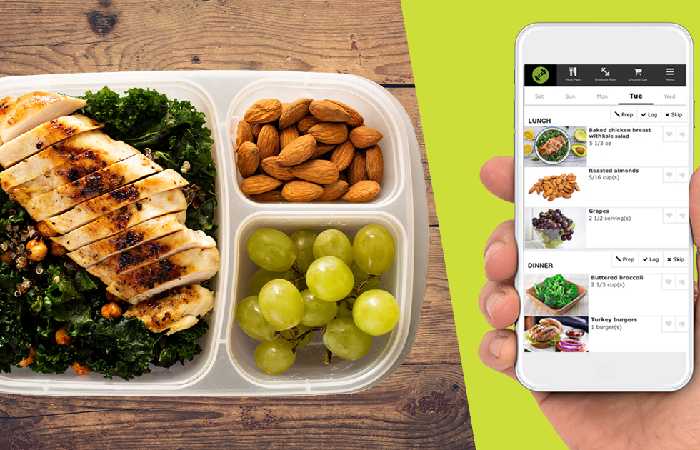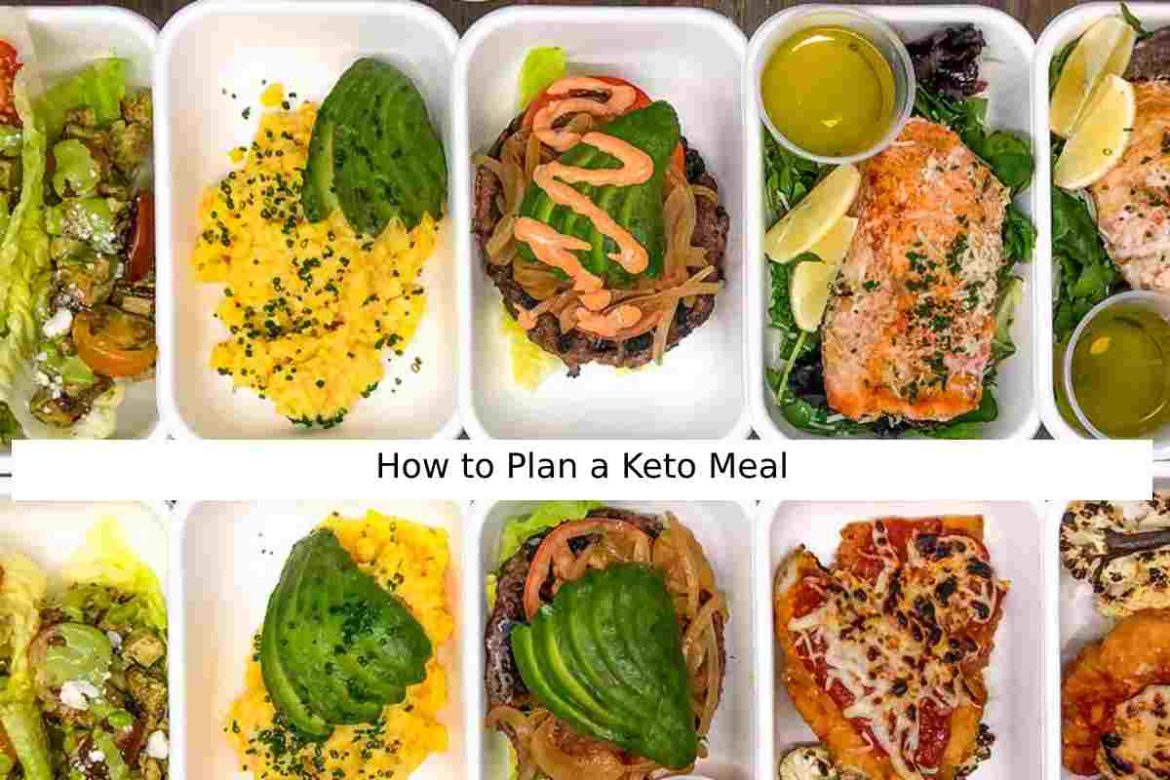How to Plan a Keto Meal – Whether you’re a health buff or a beginner, chances are that you’ve heard about or have wanted to try keto, the ketogenic diet, or keto meal plans sometime within the decade. If you’re interested in learning more about keto and how to plan a keto meal, you’ve come to the right place. This simple guide is going to explore:
● What the ketogenic diet is
● The foods that are and aren’t allowed on it
● How to shop for the keto diet
● How to calculate macros
● Which keto recipes and meal plans to follow
Read on to learn all the basics you need to know to plan a keto meal.
What is the Ketogenic Diet?
The ketogenic diet is a particular type of low-carb diet. It focuses on a specific ratio of macronutrients
(macros), which include protein, fat, and carbohydrates. The goal of the diet is to help the body reach a state of ketosis. The diet relies on healthy foods that are high in fat, contain very few carbohydrates, and are moderate in protein. When you follow a keto meal plan, it just takes a few days for your body to enter a state of ketosis and
start burning fat. Ketosis is a process that occurs when the body doesn’t have enough carbohydrates to burn for energy. Instead, it provides an alternate energy source by burning fat while creating something called ketones, which it uses for fuel.
Some of the essential points to keep in mind when starting a ketogenic diet are to:
- Consume less than 20g net carbs per day
- Use fat as a lever – eat enough of it to be satisfied, but don’t try to add more in once you’ve had
enough - Drink a lot of water – aim for 16 cups when following a low-carb diet
- Keep up electrolytes, mainly sodium, potassium, and magnesium
- Eat only when you are hungry
- Focus on whole foods
Now that you have a good idea of the keto diet, read on to learn which foods are and aren’t allowed on it and how to plan a keto meal.
Know What is and is Not Allowed on the Keto Diet
When following such a specific type of diet, it should come as no surprise that particular groups of foods are and aren’t allowed. One of the reasons why the keto diet is so popular, though, is that it allows you to eat plenty of fat and protein, so that the diet is satisfying enough to keep most people fulfilled. The following are some basic, comprehensive lists of both.
What is Not Allowed
Cutting down on carbohydrates is one of the most significant adjustments for anyone starting a keto
diet. To make things simple, avoid the foods below:
- Seed and vegetable oils – especially margarine, canola oil, corn oil, grapeseed oil, and soybean oil.
- Processed low-carb foods – check labels for starch, hidden sugar, and other carb filled
ingredients Grains, including wheat, bread, pasta, rice, oats, cereal, corn, etc. - Sugary foods, including table sugar, candy, pastries, cakes, ice cream, chocolate, soda, juice,
honey, maple syrup, etc. - High-sugar fruits, including bananas, pineapple, oranges, apples, grapes, etc.
Starchy vegetables, including potatoes, sweet potatoes, parsnips, etc. - Legumes, including beans, lentils, chickpeas, etc. (peanuts in moderation are an exception)
- Low-fat dairy and milk, including cow’s milk (except heavy cream is fine), low-fat cheese, etc.
What is Allowed
- The following list summarizes foods that are allowed on a keto diet:
● Healthy fats, including avocado oil, olive oil, butter, and coconut oil
● Low-carb condiments, including mayonnaise, hot sauce, and mustard
● Full-fat dairy foods, including cheese, cream cheese, and heavy cream
● Leafy greens and non-starchy, above-ground vegetables, including lettuce, spinach, kale,
zucchini, cauliflower, peppers, broccoli, asparagus, celery, and many others
● Meat, poultry, and seafood, including beef, pork, lamb, chicken, turkey, duck, salmon and other
fish, shrimp, crab, and lobster
● Eggs
● Sugar-free beverages, including water, coffee, and tea
● Herbs and spices, including basil, dill, and cinnamon
Foods Allowed in Moderation
Check the list below for the foods allowed in moderation on the keto diet.
● Low-carb fruit, including avocados (the only fruit that doesn’t need to be in moderation),
berries, and coconuts
● Nuts and seeds, including almonds, macadamia nuts, walnuts, chia seeds, and sunflower seeds
● Sugar-free sweeteners, including allulose, erythritol, monk fruit, and stevia
● Low-carb flour, including almond flour, coconut flour, and psyllium husk powder
Start with Shopping
In order to stick with a keto meal plan, it’s important to have the right ingredients available at home .While the lists above provide an idea of the best and worst foods for the keto diet, it’s wise to stock upon the basics and your favorite foods when you’re starting out. One trick is to focus on the outer section of the grocery store first. That’s where you’ll find the produce, meat, and dairy, which are most beneficial for keto meal planning. Avoid the inner aisles as much as possible. Those are filled with processed, carbohydrate-rich foods like crackers, chips, and pasta – all no-no’s in any keto diet plan.
Along with your meal prep ingredients, be sure to stock up on some keto-approved foods that don’t
need to be cooked or are very easy to cook so that you always have some easy snacks to reach for.
It’s also a good idea to have some substitution ideas on hand for ingredients on your keto meal planning
list in case you get to the store and some items aren’t available or don’t look good or fresh enough.
Calculate Your Macros Ahead of Meal Planning

Macros – short for macronutrients – come in the form of protein, carbohydrates, and fat. Together, they provide energy for our bodies, and all three play essential roles in a successful keto diet plan.
As a general guideline, below are the recommended macro percentages to aim for:
● Fat: 60% to 75%
● Protein: 20% to 25%
● Net Carbs: 5% to 10%
When you start a ketogenic diet plan, it’s recommended to count macros, at least in the beginning.
Counting macros gives you a better sense of what and how much you should eat. If you want to be
positive that you’re eating the right amounts, you’ll need to use a keto macro calculator.
Find Meal Plans or Recommended Recipes
Once you’ve understood the basics of the keto diet and have written up a shopping list of basics and
staples, consider trying out some new keto-friendly recipes or putting together a comprehensive keto
meal plan.
You can use basics and staples to cover breakfast and lunch (and if you’re intermittent fasting, you might even be skipping breakfast, which makes things even easier). While the first part of the day can be put together pretty easily on the fly, it’s a good idea to plan out dinners so that when you’re rushed after work or feeling particularly stressed, you don’t fall back into old habits just because you have something easier to throw together that isn’t as healthy.
Another important thing to remember is to always plan realistic meals. If you know you’re going to be tired or strapped for time most days, don’t set the bar too high by planning to prepare overly complex meals for dinner. Save more time-consuming dishes for days off or special occasions. Keep yourself on track by counting carbs very carefully for breakfast and lunch so that you have some
flexibility in the evening and for snacks. Check out the following example of an ideal keto meal plan:
- Breakfast: Egg and turkey sausage scramble
- Lunch: Thai green curry
- Dinner: Halibut and zoodles
There are plenty of helpful keto recipe archives online that can give you inspiration, ideas, and specific recipes with nutrition facts included.
The Final Word
When you’re ready to start making a keto meal plan, begin by looking at your favorite meals and think about how to translate them into keto-friendly meals. Using your familiarity with existing recipes to start your keto meal plan will make it much easier to plan and prep ahead. Then, as you become more comfortable with meal planning for the keto diet, you can start incorporating new keto recipes that fit your taste and lifestyle.
While following a ketogenic diet can be beneficial, enjoyable, and easy to follow, you should always
check with your doctor before making a drastic diet or lifestyle change, especially if you take any
medication. Once they give you the green light, use this guide for all the keto meal planning basics you
need to get started.
Author Bio
Paul Hauser is the Marketing Director at Ketogenic.com, the industry’s go-to resource to start, sustain and succeed with the keto diet. Paul’s background with health and wellness, supplemental
manufacturers, and exercise science allows him to combine science and marketing strategies to change the way people see nutrition.


